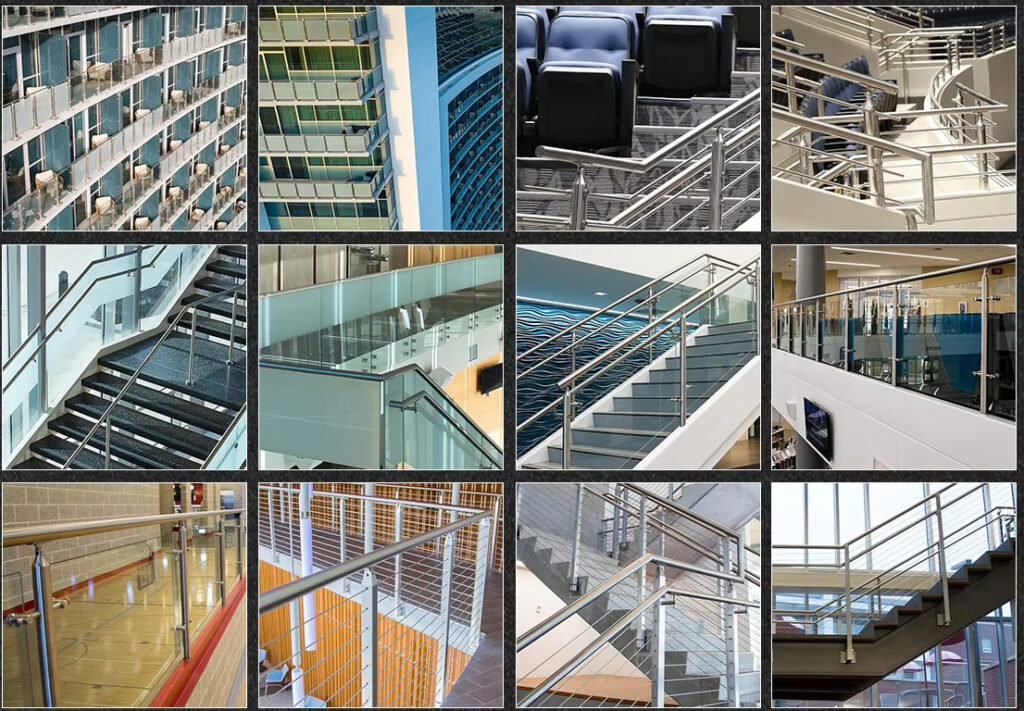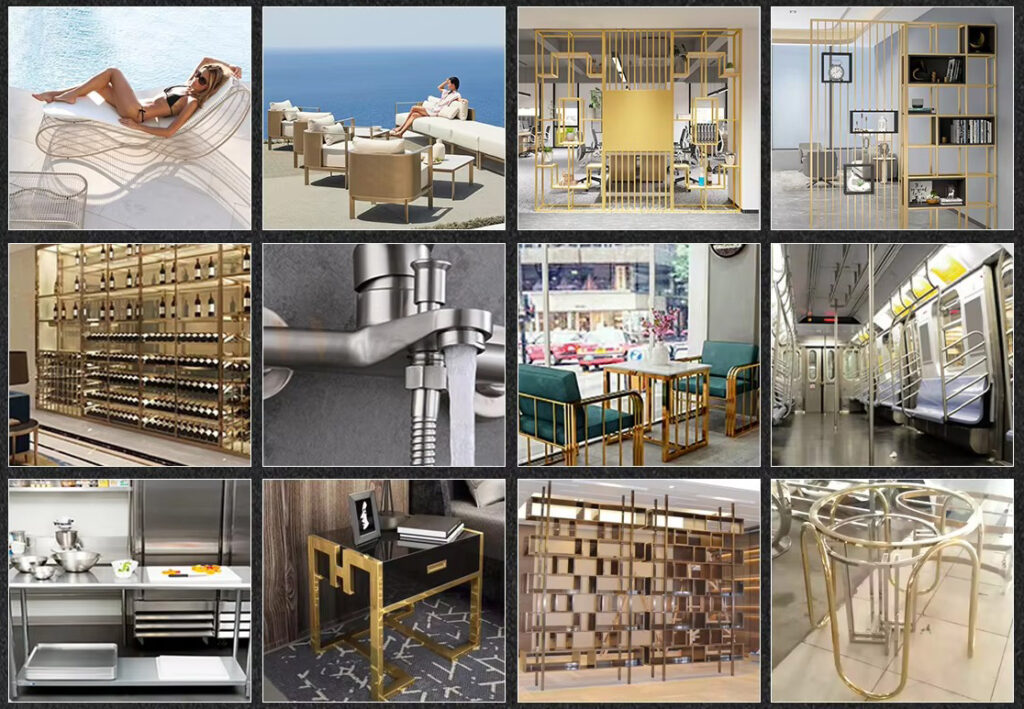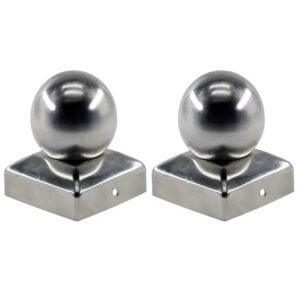
Post caps & end caps (round, square, decorative)
Post caps & end caps in 316L stainless steel. 23 years precision manufacturing for decorative applications worldwide. Request quote today.

Post caps & end caps in 316L stainless steel. 23 years precision manufacturing for decorative applications worldwide. Request quote today.
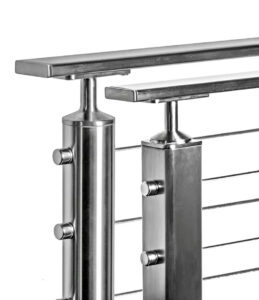
Square stainless steel posts in 304/316L grades. 23 years precision manufacturing for coastal projects worldwide. Request quote today.
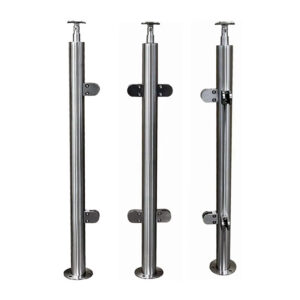
Stainless steel posts in 304/316L grades. 23+ years ODM fabrication for marine & commercial applications. Contact factory today.
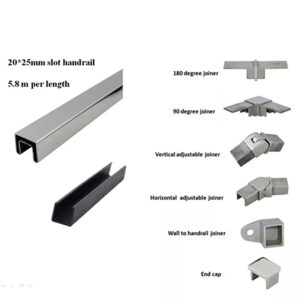
Square top rail components in 316L stainless steel. 23+ years precision manufacturing for global applications. Contact factory today.
Project-specific hardware in 316L stainless steel. 23 years delivering tailored solutions for specialized projects worldwide. Get factory quote today.
Non-standard size components in 316L stainless steel. 23+ years ODM manufacturing for unique sizing requirements globally. Contact us today.
| Specification | Our Outdoor Stainless Steel Systems | Aluminum Railing Systems | Competitive Advantage |
|---|---|---|---|
| Corrosion Resistance | 500+ hours salt spray (316 grade) | 200 hours maximum | 150% superior marine environment performance |
| Tensile Strength | 590 MPa (304/316 grade) | 300 MPa (6061-T6) | 97% stronger structural performance |
| Temperature Range | -40°C to +400°C stable | -30°C to +150°C | Extended thermal cycling resistance |
| Wall Thickness | 2.0-4.0mm customizable | 1.5mm standard | Enhanced impact resistance and longevity |
| Maintenance Interval | 24-36 months | 6-12 months | 200% longer service cycles |
| Load Capacity | 200 lbs/linear foot | 125 lbs/linear foot | 60% higher load bearing capability |
| UV Degradation | Zero material degradation | Coating failure 3-5 years | Indefinite color stability |
| Fire Rating | Non-combustible Class A | Melts at 660°C | Superior fire safety performance |
Superior Weather Resistance vs. Alternative Materials
Outdoor stainless steel railing systems provide unmatched environmental durability compared to aluminum, composite, or vinyl alternatives. While aluminum requires protective coatings that fail under UV exposure and salt spray, stainless steel’s inherent chromium oxide passivation layer self-repairs when scratched, maintaining corrosion protection indefinitely without refinishing cycles.
Thermal Stability and Expansion Management
Unlike aluminum that expands significantly with temperature fluctuations, causing joint stress and fastener loosening, stainless steel maintains dimensional stability across extreme temperature ranges. Composite materials become brittle in cold weather and can warp under intense heat, while stainless steel performs consistently from -40°C to +400°C.
Structural Integrity Under Dynamic Loads
Marine-grade 316 stainless steel delivers twice the fatigue resistance of aluminum and maintains load-bearing capacity under continuous wind loading and seismic activity. Vinyl and composite systems experience creep deformation under sustained loads, compromising safety margins that stainless steel maintains throughout decades of service.
Zero Maintenance Performance
While aluminum requires repainting every 3-5 years and composite materials need regular cleaning to prevent mold growth, stainless steel achieves maintenance-free performance with only periodic washing. The brushed and mirror polish finishes resist fingerprinting and atmospheric staining that plague other materials.
Coastal Residential Deck Systems
Beachfront homes within 5 miles of saltwater require 316 marine-grade stainless steel railings that withstand salt spray exposure exceeding 500 hours ASTM B117 testing. Standard aluminum systems fail within 18 months due to chloride pitting, while our systems maintain structural integrity for 25+ years.
Commercial Rooftop Terraces
Urban office buildings and hospitality venues install 304 stainless steel railing systems on rooftop dining areas where atmospheric pollution, acid rain, and high wind exposure destroy powder-coated aluminum within 2-3 years. Stainless steel eliminates coating maintenance downtime and liability issues.
Resort Pool and Spa Deck Railings
Hotel swimming pool areas demand chlorine-resistant stainless steel systems that withstand daily chemical sanitization and steam exposure. Aluminum and steel systems corrode rapidly in chlorinated environments, while 316 stainless steel provides indefinite service life.
Mountain Lodge and Ski Resort Installations
High-altitude properties experience extreme temperature cycling, UV intensity, and precipitation that cause composite materials to crack and aluminum coatings to fade. 316 stainless steel cable railing systems maintain appearance and safety through decades of harsh alpine conditions.
Marina and Waterfront Commercial Properties
Restaurants, retail, and office buildings near harbors require marine-grade railing systems that resist salt fog, high humidity, and storm surge exposure. Our systems eliminate the 5-year replacement cycles common with aluminum installations in marine environments.
Industrial Facility Outdoor Walkways
Manufacturing plants with outdoor elevated platforms need heavy-duty stainless steel railings that withstand chemical vapors, thermal shock from process equipment, and impact from material handling operations where lightweight aluminum systems would fail.
What’s the difference between 304 and 316 stainless steel for outdoor railing applications?
304 stainless steel provides excellent corrosion resistance for most outdoor environments including urban, suburban, and mild industrial settings. 316 grade includes molybdenum for superior chloride resistance, making it essential for coastal properties within 5 miles of saltwater, pool areas, and marine environments. 316 costs approximately 20% more but eliminates premature failure in aggressive conditions.
How do stainless steel outdoor railings compare to aluminum systems in total cost of ownership?
While stainless steel has 30-40% higher initial material costs, the total cost over 20 years is 60% lower than aluminum. Aluminum requires repainting every 3-5 years at $15-25 per linear foot plus structural replacement due to corrosion. Stainless steel requires only periodic cleaning with no refinishing, providing superior long-term value.
Can outdoor stainless steel railings withstand hurricane and high wind conditions?
Yes, our systems are designed for wind loads exceeding 150 mph when properly anchored. The 590 MPa tensile strength and welded construction provide superior wind resistance compared to aluminum’s mechanical fastener connections that can loosen under dynamic loading. Cable railing systems offer additional aerodynamic advantages in extreme wind conditions.
What maintenance is required for outdoor stainless steel railing systems?
Outdoor installations require cleaning every 3-6 months using pH-neutral cleaners to remove atmospheric deposits. Marine environments need monthly salt removal washing. No painting, staining, or protective coating renewal is required. Proper cleaning maintains warranty coverage and prevents mineral buildup that can cause surface staining.
How do outdoor stainless steel railings perform in extreme temperature climates?
Stainless steel maintains structural properties from -40°C to +400°C, far exceeding aluminum and composite limitations. No thermal expansion joints are required for typical residential installations. Desert climates benefit from reduced heat retention compared to aluminum, while arctic conditions don’t affect structural integrity like composite materials.
Are there building code requirements specific to outdoor stainless steel railing systems?
All outdoor guardrail systems must meet IBC load requirements of 200 pounds concentrated load and 50 pounds per linear foot uniform load. Our systems exceed these requirements by 100% safety margins. Height requirements vary by jurisdiction but typically require 42-inch minimum for commercial and 36-inch for residential applications above 30 inches elevation.
What design options are available for outdoor stainless steel railing systems?
We offer cable infill, glass panel compatibility, horizontal bar designs, and custom profiles. Surface finishes include brushed (#4 finish), mirror polish (#8 finish), and electropolished options. Post mounting systems accommodate surface, core, and fascia mounting configurations for various architectural requirements.
How do outdoor stainless steel systems handle thermal expansion in large installations?
Stainless steel’s thermal expansion coefficient is 60% lower than aluminum, reducing expansion stress in long runs. For installations exceeding 100 linear feet, we incorporate expansion joints at strategic locations. Proper connection detailing accommodates movement without compromising structural integrity or appearance.
Building Code Compliance Standards
Outdoor stainless steel railing systems comply with IBC Section 1013 guard requirements and ASCE 7 wind load provisions for structural integrity. Load testing follows ASTM E894 and E985 standards with documented proof testing at 1.5 times design loads. Seismic installations meet ASCE 7 seismic design requirements for essential facilities.
Material Specifications and Certifications
All outdoor-grade materials conform to ASTM A240 stainless steel specifications with certified mill test certificates documenting chemical composition and mechanical properties. Marine-grade 316 installations include NACE SP0169 atmospheric corrosion compliance for coastal environments exceeding 1000 hours salt spray exposure.
Corrosion Resistance Testing
Salt spray testing per ASTM B117 standards demonstrates 500+ hour performance for 316 grade and 200+ hours for 304 grade applications. Cyclic corrosion testing follows ASTM G85 protocols simulating real-world exposure conditions including acid rain, UV radiation, and thermal cycling.
Wind Load and Structural Standards
Structural design meets ASCE 7 wind load provisions for exposure categories B, C, and D with ultimate wind speeds up to 200 mph. Connection details follow AISC 360 steel construction standards with documented weld procedures per AWS D1.1 structural welding code.
Environmental and Sustainability Compliance
Manufacturing processes meet ISO 14001 environmental management standards with documented recycled content tracking. End-of-life recyclability achieves 100% material recovery compared to composite systems requiring landfill disposal. Carbon footprint analysis demonstrates 40% lower lifetime environmental impact than aluminum alternatives.
Quality Assurance and Testing Protocols
Production follows ISO 9001:2015 quality management with batch traceability and inspection documentation. Impact testing per ASTM A370 standards verifies toughness requirements for low-temperature service. Dimensional verification ensures ±1mm tolerance compliance for precision fit and finish requirements.

